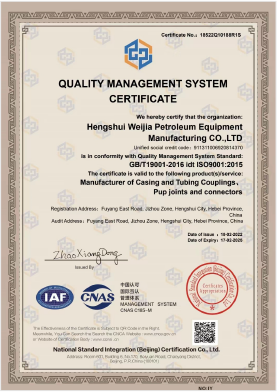- Afrikaans
- Albanian
- Amharic
- Arabic
- Armenian
- Azerbaijani
- Basque
- Belarusian
- Bengali
- Bosnian
- Bulgarian
- Catalan
- Cebuano
- Corsican
- Croatian
- Czech
- Danish
- Dutch
- English
- Esperanto
- Estonian
- Finnish
- French
- Frisian
- Galician
- Georgian
- German
- Greek
- Gujarati
- Haitian Creole
- hausa
- hawaiian
- Hebrew
- Hindi
- Miao
- Hungarian
- Icelandic
- igbo
- Indonesian
- irish
- Italian
- Japanese
- Javanese
- Kannada
- kazakh
- Khmer
- Rwandese
- Korean
- Kurdish
- Kyrgyz
- Lao
- Latin
- Latvian
- Lithuanian
- Luxembourgish
- Macedonian
- Malgashi
- Malay
- Malayalam
- Maltese
- Maori
- Marathi
- Mongolian
- Myanmar
- Nepali
- Norwegian
- Norwegian
- Occitan
- Pashto
- Persian
- Polish
- Portuguese
- Punjabi
- Romanian
- Russian
- Samoan
- Scottish Gaelic
- Serbian
- Sesotho
- Shona
- Sindhi
- Sinhala
- Slovak
- Slovenian
- Somali
- Spanish
- Sundanese
- Swahili
- Swedish
- Tagalog
- Tajik
- Tamil
- Tatar
- Telugu
- Thai
- Turkish
- Turkmen
- Ukrainian
- Urdu
- Uighur
- Uzbek
- Vietnamese
- Welsh
- Bantu
- Yiddish
- Yoruba
- Zulu
seating nipple tubing
Understanding Seating Nipple Tubing An Essential Component in Oil and Gas Operations
Seating nipple tubing is an integral part of oil and gas extraction processes, playing a crucial role in the completion of wells. As the industry continues to evolve and adopt more advanced technologies, understanding the functions, types, and significance of seating nipple tubing becomes increasingly important for engineers, operators, and technicians.
What is Seating Nipple Tubing?
Seating nipple tubing, also known as a seating nipple, is a specialized tubular fitting used in the completion phase of oil and gas wells. It serves as a connection point for various downhole tools, such as packers and plugs, allowing for the effective control of fluid flow. The primary function of the seating nipple is to provide a reliable and secure anchoring point for these tools, ensuring that they remain in place during the production phase and throughout the well's lifecycle.
The design of seating nipple tubing often incorporates specific features that facilitate easy installation and retrieval of downhole equipment. It is typically installed within the production tubing string at predetermined depths, tailored for the well's unique geological and operational conditions.
Types of Seating Nipple Tubing
Seating nipple tubing comes in various configurations to suit different applications. Some of the common types include
1. Type A Nipple This is a standard design that accommodates specific tools and is often used for basic well completions. It features a straightforward connection, which is easy to install and retrieve.
2. Type B Nipple This design has an enhanced locking mechanism that provides additional security for the downhole tools. It is particularly useful in high-pressure or complex well environments.
3. Type C Nipple The most advanced design, Type C nipples can accommodate a wider range of tools and feature innovations that allow for increased flow rates and improved operational efficiency.
The choice of seating nipple tubing type depends on various factors, including the well's design, the nature of the reservoir, and the specific tools being utilized. It is vital for engineers to undertake thorough assessments to select the most suitable type for each application.
seating nipple tubing

The Importance of Proper Selection and Installation
The selection and installation of seating nipple tubing are critical to the overall success of a well completion
. Incorrectly choosing the type of nipple or improperly installing it can lead to operational failures, increased costs, and even breaches in safety protocols.When selecting seating nipple tubing, several considerations should be made
- Compatibility Ensure that the chosen seating nipple is compatible with other downhole components. This includes matching the nipple's size and specifications with the required tools for the application.
- Strength and Durability The materials used in seating nipple tubing should withstand the given well conditions, which may include high pressures, corrosive fluids, and extreme temperatures.
- Ease of Retrieval Operators must consider how easily the tools can be retrieved from the nipple once the operation is complete, as this can affect subsequent interventions and maintenance strategies.
Challenges and Innovations
As the oil and gas industry faces increasing pressures, including cost management and environmental considerations, innovations in seating nipple tubing design and materials continue to emerge. Enhanced materials, such as high-strength alloys and composite materials, offer improved performance traits.
Additionally, advancements in manufacturing technologies, including precise machining and coating processes, allow for the development of more reliable products. Smart technology integration, such as sensors within nipple designs, is also being explored to monitor performance and optimize operations in real-time.
Conclusion
Seating nipple tubing is more than just a component in the oil and gas industry; it is a vital instrument that ensures the efficient and safe extraction of resources. Understanding its types, importance, and the nuances of selection and installation can greatly impact the success of well completions. As technology advances and the industry grows, continued education and adaptation around seating nipple tubing will be crucial for anyone involved in oil and gas operations. With the right knowledge and tools, operators can ensure their systems function optimally, contributing to a more sustainable and effective energy future.
-
Tubing Pup Joints: Essential Components for Oil and Gas OperationsNewsJul.10,2025
-
Pup Joints: Essential Components for Reliable Drilling OperationsNewsJul.10,2025
-
Pipe Couplings: Connecting Your World EfficientlyNewsJul.10,2025
-
Mastering Oilfield Operations with Quality Tubing and CasingNewsJul.10,2025
-
High-Quality Casing Couplings for Every NeedNewsJul.10,2025
-
Boost Your Drilling Efficiency with Premium Crossover Tools & Seating NipplesNewsJul.10,2025







